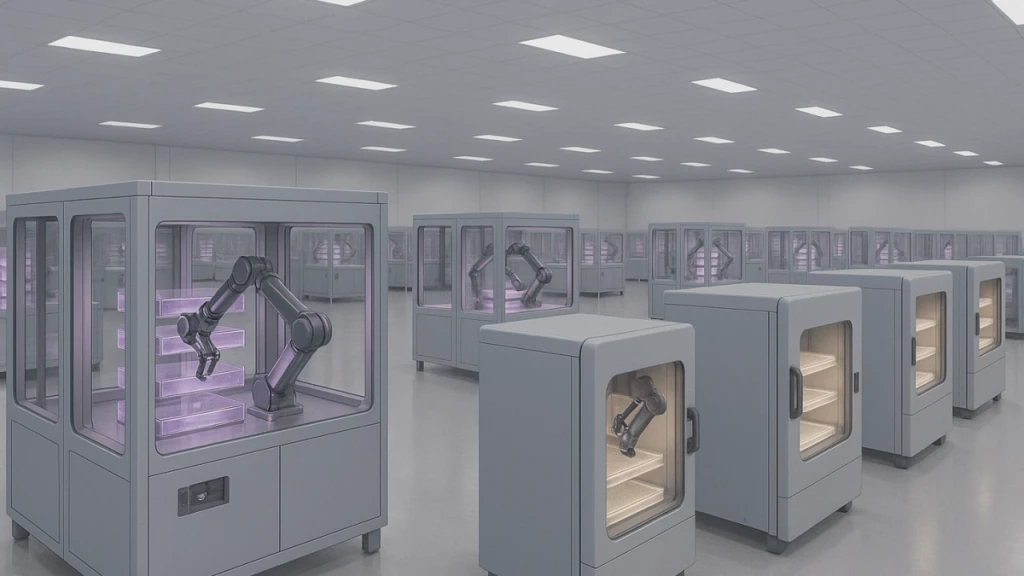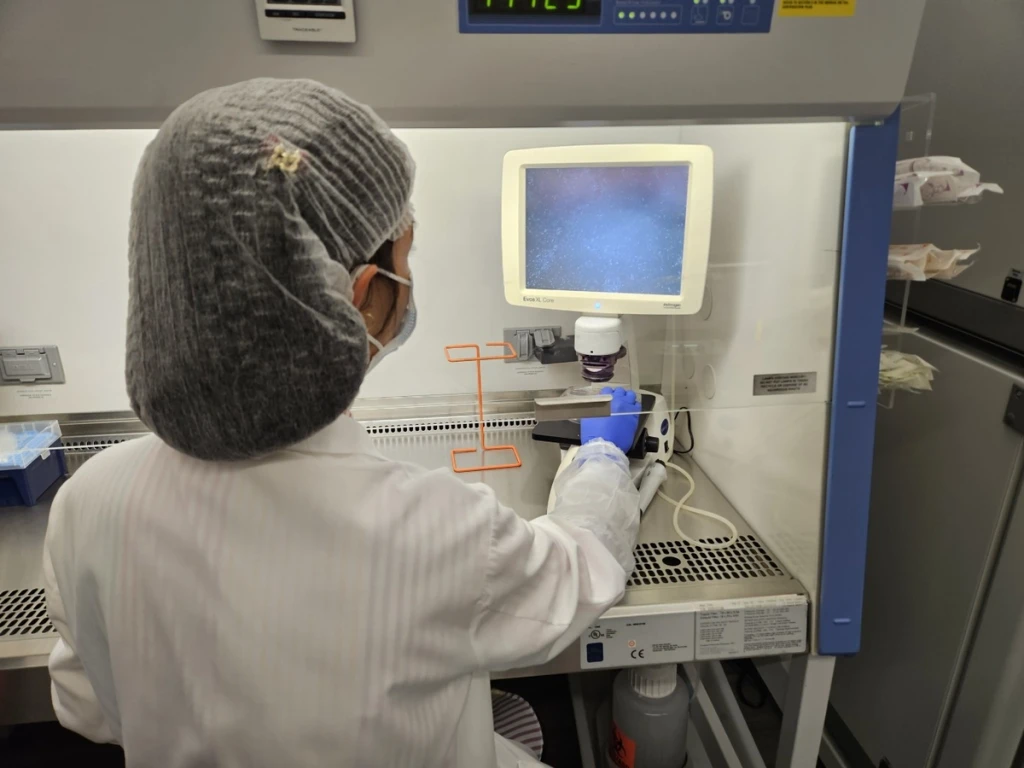Scalable Manufacturing: The Make-or-Break Factor for Cell, Gene, and Tissue Therapies

Reflections Post-Alliance for Regenerative Medicine’s Meeting on the Med, Rome, 2025
The promise of cell, gene, and tissue therapies (CGTs) is revolutionary - regenerative treatments for a wide range of conditions once deemed untreatable. Yet behind the surge in scientific innovation lies a sobering reality: without scalable, efficient manufacturing, these therapies will never reach the hundreds of millions of patients who need them.
At the Alliance for Regenerative Medicine’s recent Meeting on the Med, one message came through loud and clear: the future of CGTs hinges not only on scientific and clinical breakthroughs but also on our ability to manufacture them at scale, consistently, and affordably.
The Barrier to Commercialization and Global Patient Access
Over the past two decades, we've seen impressive momentum around the globe: 26 approved CGTs in the U.S., 28 in the EU, 8 in Canada, 9 in Japan, 5 in China, and 13 in South Korea. But behind these milestones is a troubling trend -a significant portion of approved therapies have been withdrawn from the market. As Emer Cooke, Executive Director of the EMA, noted in her remarks, 8 of the 28 authorized Advanced Therapy Medicinal Products (ATMPs) in the EU have been pulled from the market-not due to safety or efficacy concerns, but due to a lack of commercial viability.
This isn't an isolated issue - it’s systemic. Producing CGTs and getting them to patients often involves sourcing patient-specific, living starting materials, months-long manufacturing processes, and the transplantation of a fresh, living medicine. This is orders of magnitude more complex than a traditional small molecule production process, which begins with standard well-defined chemical reagents and results in a shelf-stable product that can be easily transported and distributed. The cost of goods for CGTs remains among the highest in biopharma, often reaching hundreds of thousands or even millions of dollars per dose (Hartmann et al., 2021).
Moreover, we are already seeing signs that the number of patients being treated with approved cell therapies is beginning to plateau (Ori Biotech, 2025). If the industry does not address manufacturing scalability, commercial failure will continue to limit global patient access. Ultimately, scalable manufacturing is not just a business necessity - it’s a global health imperative.
Challenges to Overcome

Highly-trained scientist performing manual iPSC image analysis
Traditional CGT manufacturing processes are often manual, bespoke, and difficult to scale in a cost-effective manner. Overcoming the following bottlenecks will be critical to ensuring CGTs can scale to have a meaningful impact on the world.
- Fragile Supply Chains: The CGT supply chain is complex and fragile, involving temperature-sensitive starting materials and specialized reagents that are too often single-source and globally distributed. The COVID-19 pandemic revealed vulnerabilities in global supply chain logistics networks, delaying timelines across nearly every CGT developer (Hopewell et al., 2022).
- Heavy Reliance on Highly-Skilled Experts: CGT manufacturing remains heavily dependent on a small pool of highly-trained experts to perform high-precision, time-sensitive tasks (e.g. cell picking) and make critical in-process decisions based on subjective evidence (e.g. determining when to passage cells). Manufacturing an autologous iPSC-derived therapy can require hundreds of manual interventions per batch. Scaling these labor-intensive manual processes would require scaling personnel and facilities - a model that is neither sustainable nor affordable.
- Lack of Integration Across the Manufacturing Process and Ecosystem: CGT manufacturing processes often rely on disconnected units - separate technologies for cell culture, intracellular delivery, cell expansion, fill and finish, cryopreservation, and quality control. So far, many attempts to automate have resulted in “islands of automation” - fragmented processes that rely on manual interventions to link critical unit operations, increasing the risk of process failures, contamination, and data loss (Opatka et al, 2022).
- Lack of Automation: Many therapies still rely on manual, open processes using flasks or bags. Because there is a push to demonstrate clinical efficacy as quickly as possible, many therapies enter the clinic with a manual process and treat scalable manufacturing as a “future” problem, despite the fact that attempts to retrofit automation often result in costly revalidation and batch variability. The FDA has emphasized the importance of early automation for scalability, and studies have shown that early implementation of closed, automated systems not only reduces costs but also significantly enhances batch consistency (McCoy et al., 2020).
- Long Cycle Times: The time it takes to produce a single dose of a CGT product can stretch over weeks or months. This significantly impacts costs and patient access, in addition to hampering the ability to iteratively develop and improve a manufacturing process.
If CGTs are to move beyond rare diseases and impact massive global patient populations, addressing these foundational challenges must be a key priority from the beginning.
A Path Forward: Build for Scale, From the Start
If it’s any comfort, these challenges are not unique. The challenges facing CGT manufacturing today are strikingly analogous to the early days of the semiconductor industry, where small-batch artisanal processes dominated the manufacturing space and were highly dependent on skilled operators. As the industry matured, so too did the manufacturing infrastructure. Automation and light-based processing (e.g. photolithography) were used to successfully scale processes that were both highly precise (down to the nanometer scale) and highly complex (multi-step). These innovations dramatically increased scale and lowered costs, enabling semiconductors to be the foundation of today’s technology-based economy.
If we wish to see a world where personalized regenerative medicines become standard of care, we must acknowledge that manufacturing infrastructure - not just scientific ingenuity - will determine commercial success.And indeed, experts in the field are reaching this clear consensus: therapy developers that bake scalability into their development strategy from day one will be the ones to succeed. This means:
- Implementation of Automation in an Integrated Manner: Introducing automation early - during R&D and process development - isn’t just smart, it’s essential. Automation should be introduced as a fully integrated, end-to-end process to avoid failures caused by manual interventions between critical unit operations. Closed, automated systems that carry out a process from beginning to end will be the most successful in standardizing highly variable processes while minimizing manual interventions and contamination risks (McCoy et al., 2020).
- Using AI to Scale the Productivity of Highly-Skilled Experts: Experts will not be replaced by AI, but experts who leverage AI will out-compete experts who don’t. We need to keep experts in the loop, not in the lab. AI can assist operators with complex decision-making tasks, increasing throughput by orders of magnitude or more. AI is already being used successfully to optimize process parameters in real-time, detect anomalies, and yield out bad batches (Hickerson and Hunsberger, 2023). This approach multiplies the impact of limited human resources, enabling our limited workforce to manage greater production volumes.
- Optimization of Long Cycle Times w/ Digitalization and Predictive Models: Long cycle times remain a major hurdle to process development and scalability. By automatically collecting large volumes of process data, developers can build process analytical technologies that monitor cell culture characteristics in real time and dynamically adjust process parameters to maximize batch success rates. As real-world process data accumulates, virtual simulations - also known as digital twins - can be used to explore massive, multidimensional parameter spaces, enabling rapid optimization without the need for time-consuming in vitro experiments.
Racing toward early clinical data without a commercially scalable manufacturing plan is a recipe for failure. Trying to retrofit a flask-based or manual process mid-way through clinical development is costly, risky, and often unworkable. Automation and digitalization aren’t future luxuries; they’re critical to achieving cost-efficient, scalable manufacturing and creating an industry built on commercially viable high-impact therapies. By learning from industries that scaled complex processes before us - and acting boldly - we can build a world where CGTs have the greatest possible impact.
Let’s build wisely.
References
Hartmann, J., Schüßler-Lenz, M., Bondanza, A., Buchholz, C. J. (2021). Clinical development of CAR T cells—challenges and opportunities in translating innovative treatment concepts.EMBO Molecular Medicine, 13(1), e12634.
Hickerson, D., Hunsberger, J. (2023). Applying AI to advanced biomanufacturing.Artificial Intelligence in Tissue and Organ Regeneration,267-288.
Hopewell, E., Leppke, S., & Sturtevant, O. J. (2022). Process development and manufacturing: The impact of the COVID-19 pandemic on the cell and gene therapy supply chain.Molecular Therapy, 30(5), 1814–1816.
McCoy, R., Hasan, J., Ward, S., Gaddum, N.. (2020). The necessity of automated manufacture for cell-based immunotherapies: a cost-based analysis.Cell and Gene Therapy Insights, 6(5), 673-690.
Opatka, S. (2022). Improving operational efficiency in life sciences manufacturing. Process Control & Automation. https://www.processingmagazine.com/process-control-automation/article/21253165/improve-operational-efficiency-by-removing-islands-of-automation-in-life-sciences-manufacturing
Ori Biotech. (Updated 2025). Patient Access Tracker. https://oribiotech.com/insight/patient-access-tracker
